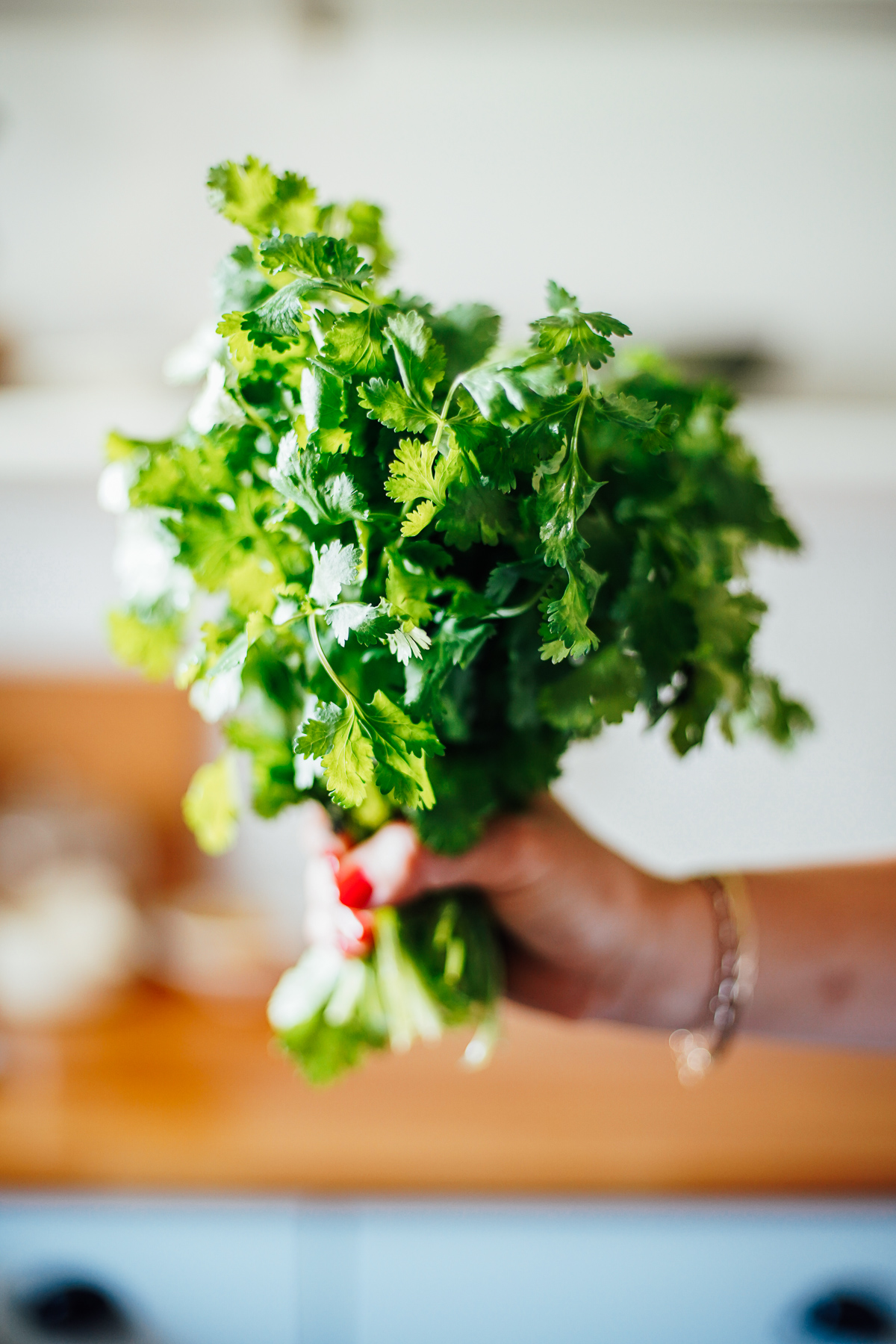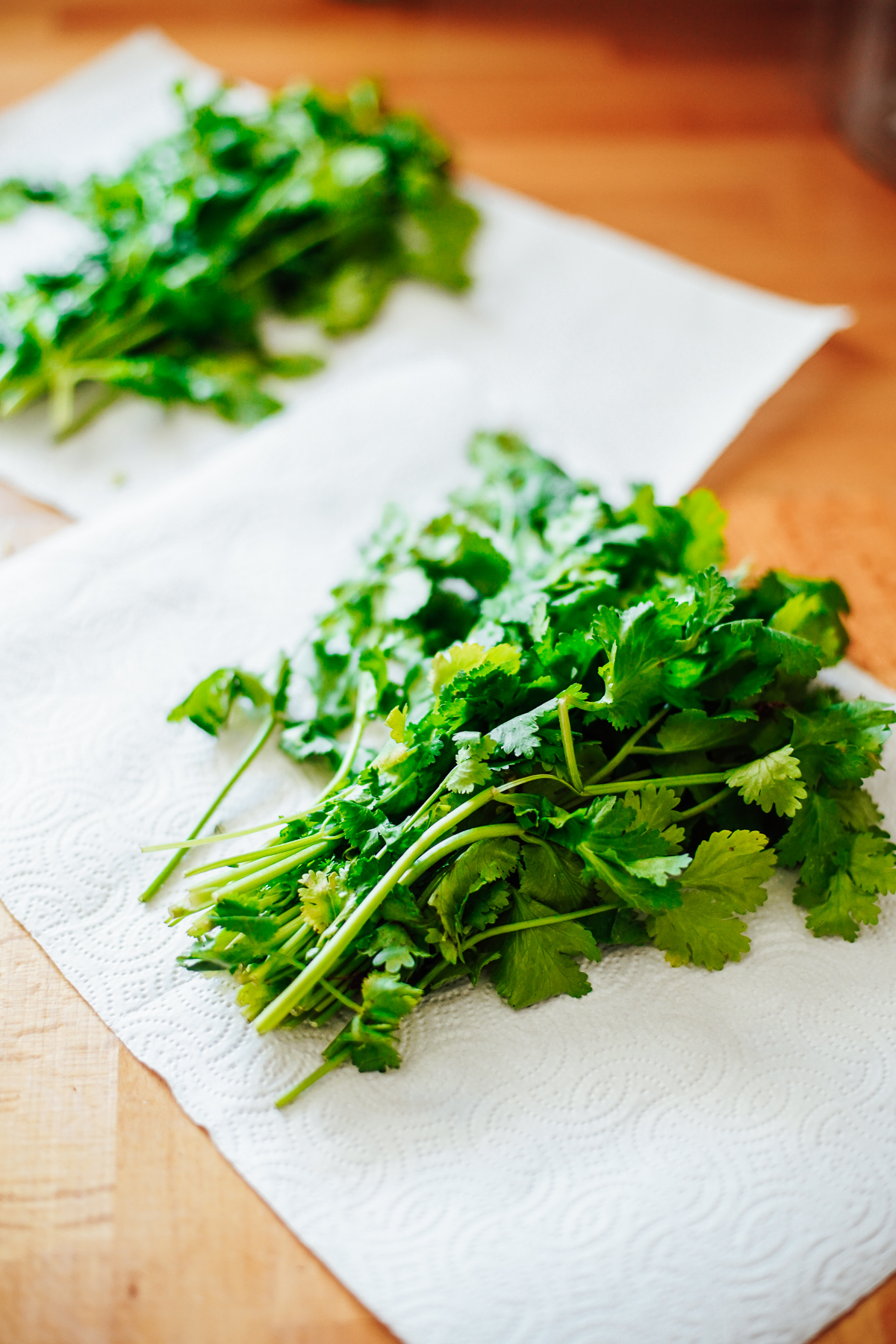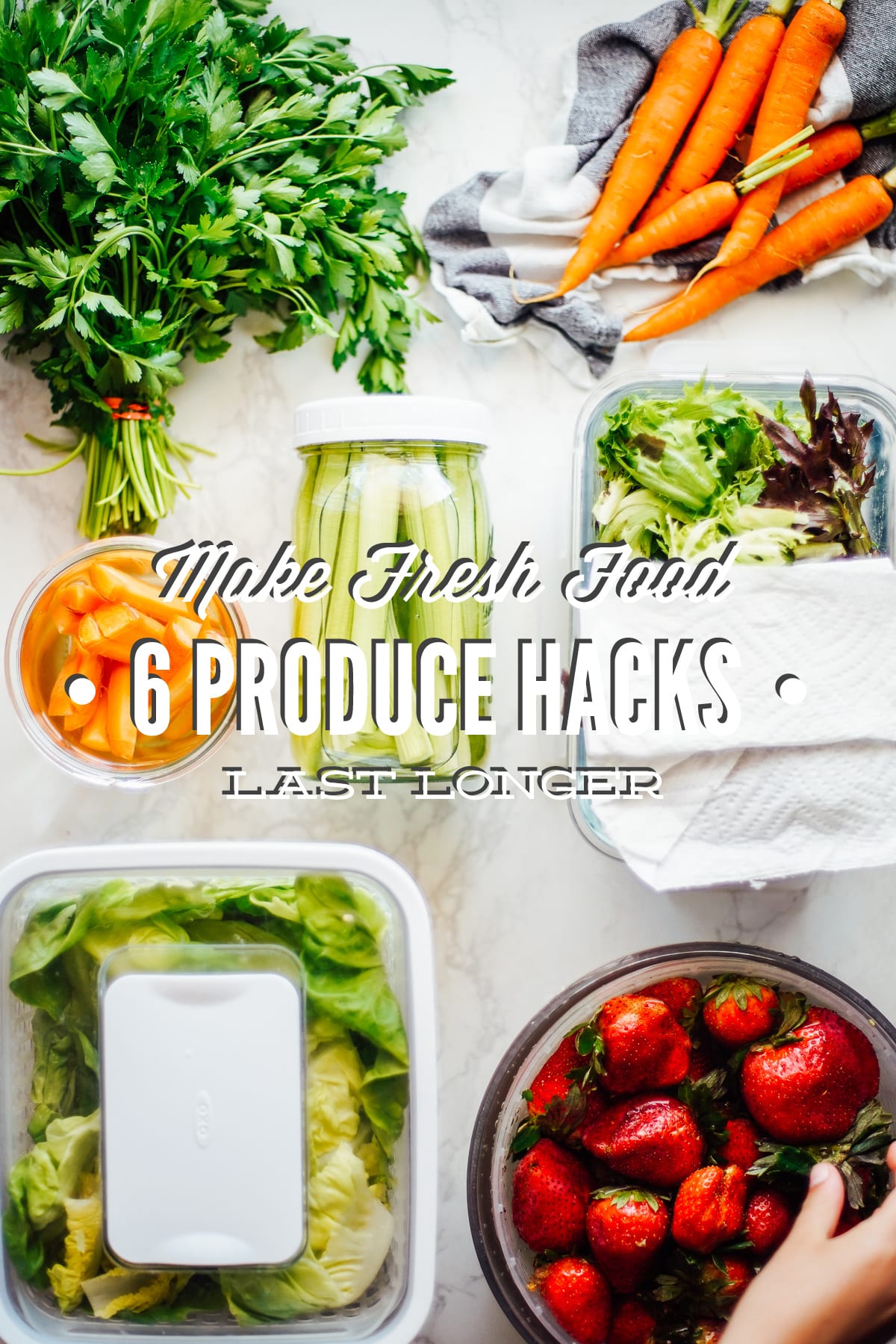How to Store Radishes (Best Ways to Keep Them Fresh & Crisp)
Have you purchased or grown fresh radishes, placed them in the fridge to use later in the week, but days later those same radishes are now limp and soft? No more wasted produce or money! Learn how to store radishes, both whole and cut, and keep them fresh and crisp for a long time in this ultimate guide!

Years ago, I never would have bothered buying a bunch of radishes at the grocery store or farmer’s market. I had no idea how to store radishes or how to use this root veggie in my home cooking.
That’s why we talk about proper food storage here at Live Simply.
I want to encourage you to get out there and buy fresh produce, even those items that you have passed on before. Bring fresh ingredients into your home, store them properly, and learn how to use them confidently in your meals.
In the past, we’ve talked about how to store fresh herbs (and my favorite herb, cilantro), carrots and celery, green onions, lettuce and other leafy greens, how to keep berries fresh, and how to freeze berries.
Today, I want to help your family become radish lovers.
First, I’ll show you the different ways (easy ways) to store whole and cut radishes. Then, how to preserve them (pickling or fermenting). And finally how to eat radishes in delicious and different ways.
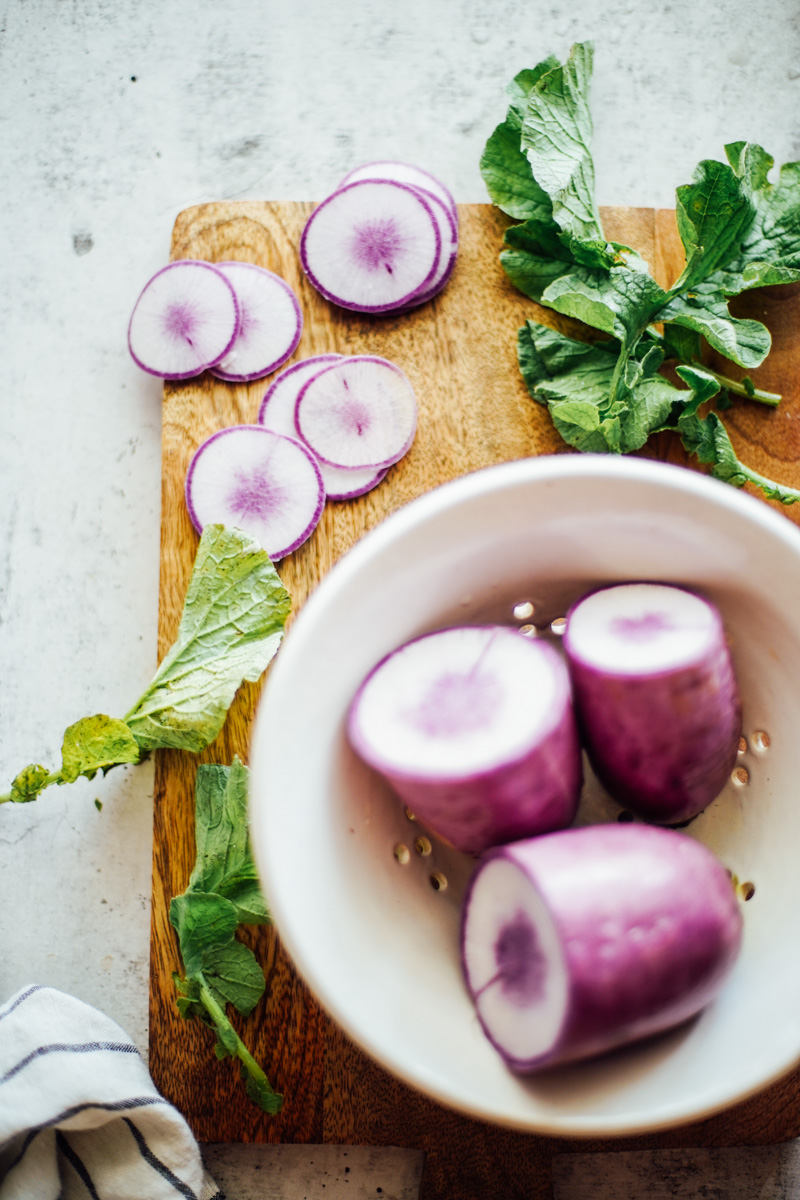
The Very Best Storage Method: In a Bowl of Water in The Fridge
Shelf Life: 2 Weeks
Hands down, this is my favorite way to store whole radishes for up to 2 weeks: submerged in a bowl of cold water inside the refrigerator.
It’s such a simple method that works because it stores radishes in a high-moisture, cold environment, preserving their crisp, crunchy texture and peppery flavor.
Tools You’ll Need
- 1 fresh bunch of radishes (with or without tops)
- Fresh Water
- Medium or Large Bowl
Step 1: Remove radish tops
If the radish greens are still attached to the radish bulbs, remove the tops by tearing them away with your hands. Or you can cut the radish greens from the bulb. You can use and eat the radish greens, so store them separately just as you would lettuce and other leafy greens.
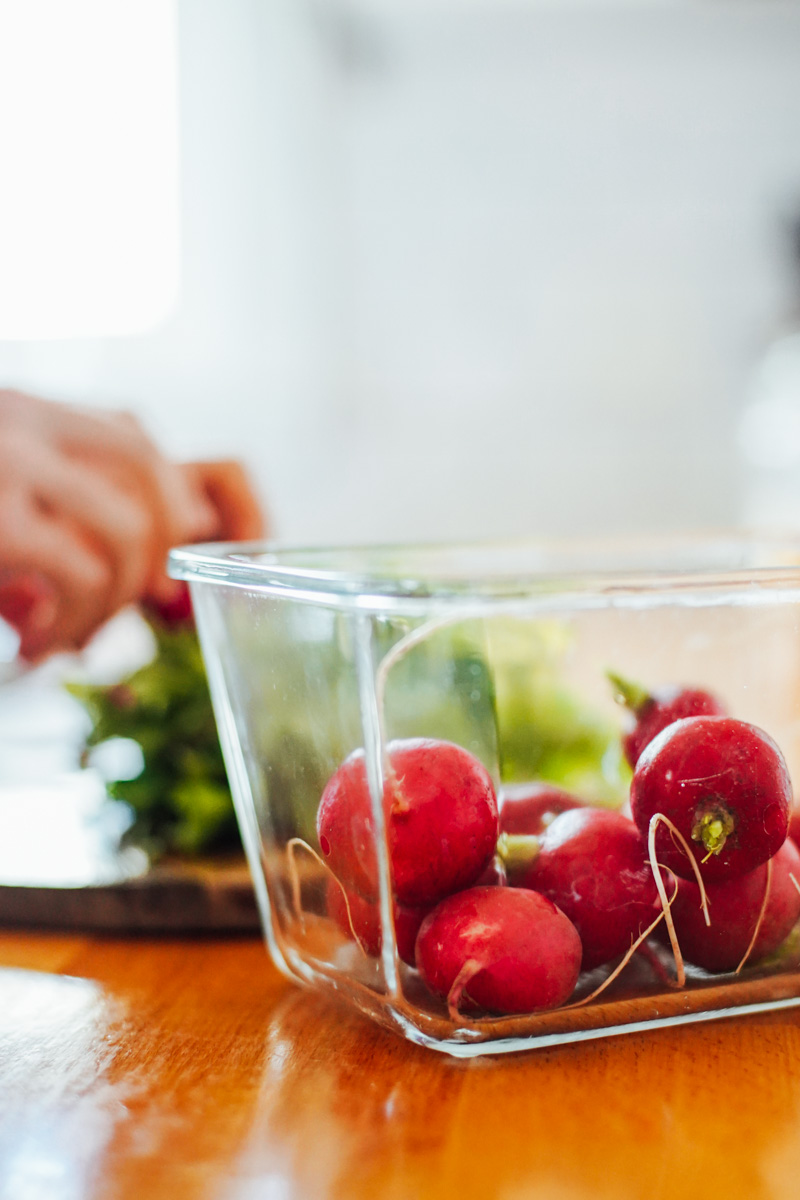
Step 2: Add radishes to a bowl
Place the whole radishes (with tops now removed) in a medium or large bowl (large enough to fit all the radishes without overflowing).
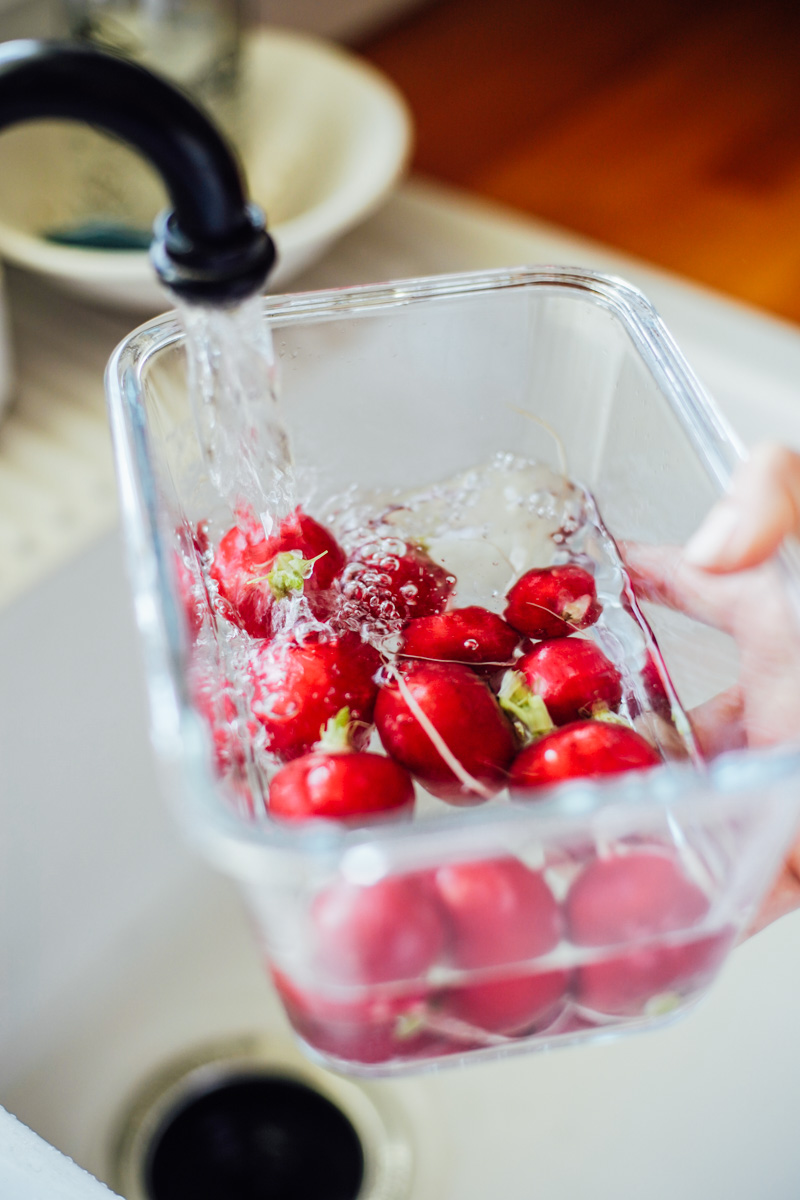
Step 3: Submerge radishes in water
Cover the radishes with fresh, cold water. All the radish bulbs should be submerged in the water.
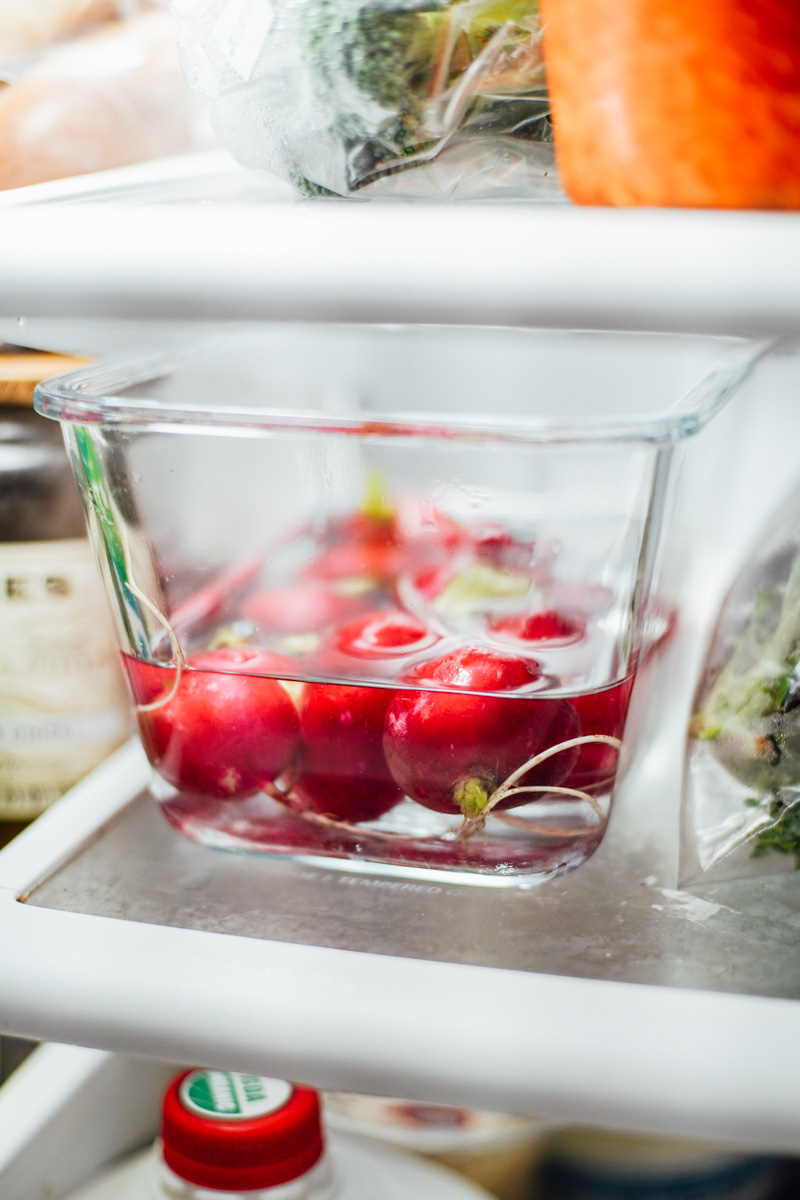
Step 4: Refrigerate
Place the bowl in the fridge, uncovered. Change the water every few days by dumping out the current water and adding clean water.
A similar water bath method is used to store other tricky vegetables, like carrots and celery.
3 More Storage Methods
1. Room Temperature
Shelf Life: 2 Days
If you’re planning to use fresh radishes within a couple of days (and need short term storage), store them on the counter, at room temperature. This works best if your home is cool (not during the hot summer without AC running).
Step 1: Separate the radish bulbs from the leafy green tops by tearing the greens from the bulb or cutting off the top of the radishes.
Step 2: Add radishes to a medium or large bowl. Fill the bowl with fresh water to fully submerge the radishes in the water.
Step 3: Place the radishes on the kitchen counter. Store for up to 2 days.
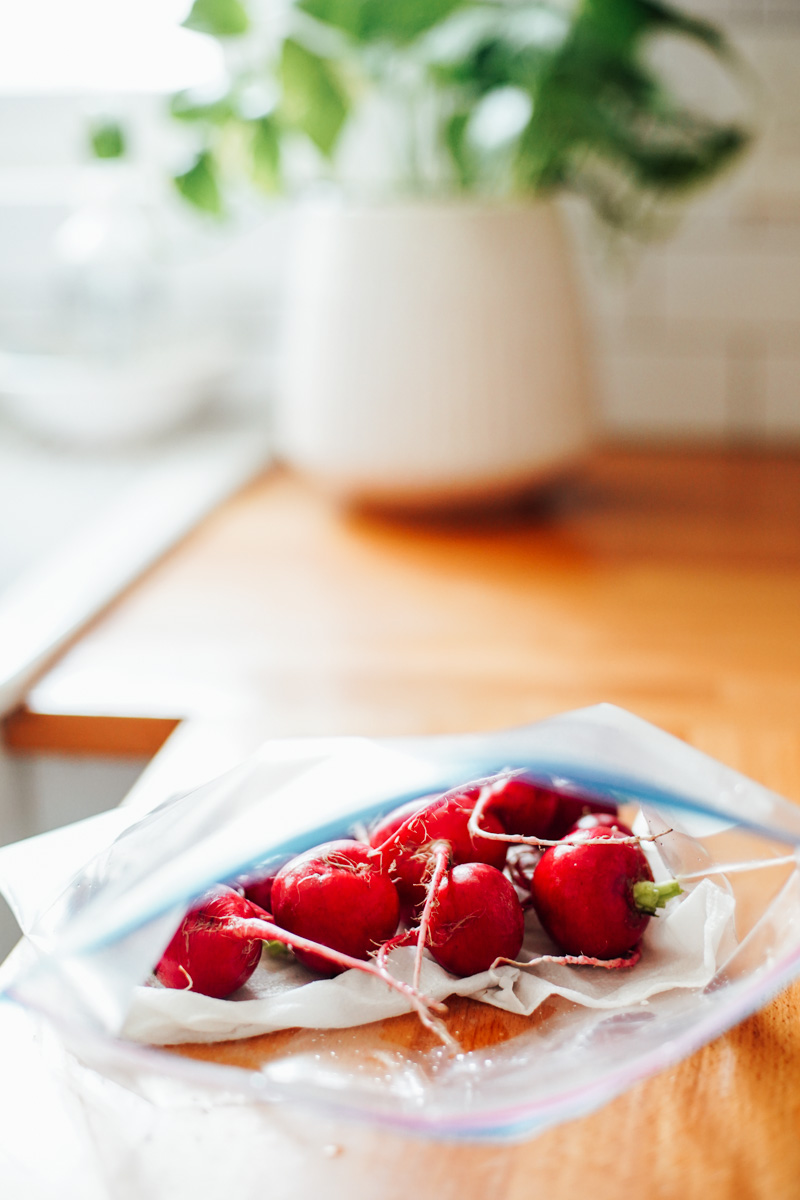
2. Bag in The Fridge
Shelf Life: 10-14 Days
Another easy storage option that keeps radishes fresh for 10-14 days is to store the radish bulbs in a bag with a damp paper towel. If you don’t have room in your fridge for a bowl, this is a great space-saving option.
Step 1: Separate the radish bulbs from the leafy green tops by tearing the greens from the bulb or cutting off the top of the radishes. You can leave a small portion of the stems, but not the leaves.
Step 2: Place the unwashed radish bulbs in a gallon-size plastic bag (or reusable silicone bag).
Step 3: Line the bag with a couple of damp paper towels or a kitchen towel (like a flour sack). Seal the bag, removing as much air as possible.
Step 4: Store the bag in the crisper drawer of your fridge.
3. Root Cellar or Basement
Shelf Life: Up to 3 Months
I live in Florida and don’t have a basement or root cellar. If you do, this method will keep radishes fresh for up to 3 months. A great way to preserve a bounty of home-grown or farmer’s market radishes during the off season.
Step 1: Find a small box, like an old shoebox, to use for storing the radishes. Make sure the box is large enough to house all the radish bulbs without overcrowding.
Step 2: Add dirt or sand to the box, misting the soil/sand with water to dampen.
Step 3: Separate the radish bulbs from the leafy green tops by tearing the greens from the bulb. You can leave a small portion of the stems, but not the whole leaves.
Step 4: Place the unwashed radishes in the damp sand or dirt, completely covering the radishes.
Step 5: Store the radishes for up to 3 months in a cold, dark place (basement or root cellar). Check on them regularly for safety.
Should you wash radishes before storing?
I don’t see any reason for washing radishes before storing (unless they’re super dirty). It’s not necessary, but also won’t harm the radishes if you choose to wash them before storing in the fridge.
Before using stored radishes, run as many as needed under fresh water, using a vegetable scrubber if needed to remove dirt.
If you’re using the root cellar/basement method, NEVER wash radishes before storing as washing will cause mold and rot to grow.

How do you keep cut radishes fresh?
Cut radishes (sliced or chopped) will stay fresh and crisp for up to 3 days in the fridge. Cut, slice, or chop as many radishes as needed and place the radish slices in an airtight container in the refrigerator. This is a great way to prep radishes in advance for salads, sandwiches, or snacking.
Add a small, damp paper towel to the base of the storage container to keep the radish slices extra crisp and moist, if desired.
Other Ways to Preserve Radishes
Two of the best ways to preserve radishes for a few weeks or months are: pickling and fermenting.
Fermented Radishes
Fermenting was commonly practiced before the age of modern food storage options, like the refrigerator and freezer. Learn more about fermentation and its health benefits in this podcast episode.
To ferment radishes, you need a jar, sliced radishes, water, salt, garlic, dill, and patience. It takes about 10-14 days for radishes to fully ferment. Once fermented, store in the fridge and enjoy for several months. Add fermented slices to sandwiches, salads, fried rice, or enjoy for a snack. Recipe: Fermented Radishes
Pickled Radishes
Pickling is the next best option, although the radishes will only last a couple of weeks in the fridge vs. months when fermented. Add sliced radishes to a mason jar with warmed apple cider vinegar, sugar, salt, and water. Place the jar in the fridge for a quick overnight pickling. Top on sandwiches, salads, or enjoy as a snack. Recipe: Pickled Radishes
How to Eat Radishes
Raw radishes are one of my favorite root vegetables. With a distinguishable crunchy texture (like a raw vegetable chip) and peppery taste, they can be enjoyed in a variety of ways. Radishes have become a staple in my fridge.
Different Types of Radishes
- Red Radishes: The most common round, red radish with a white interior sold in most grocery stores.
- Easter Radishes: Just like the round, red radish, but comes in a variety of colors: white, purple, pink.
- Watermelon Radishes: Tan exterior with a gorgeous hot pink center.
- French Breakfast Radishes: A small, skinny red radish with a white interior.
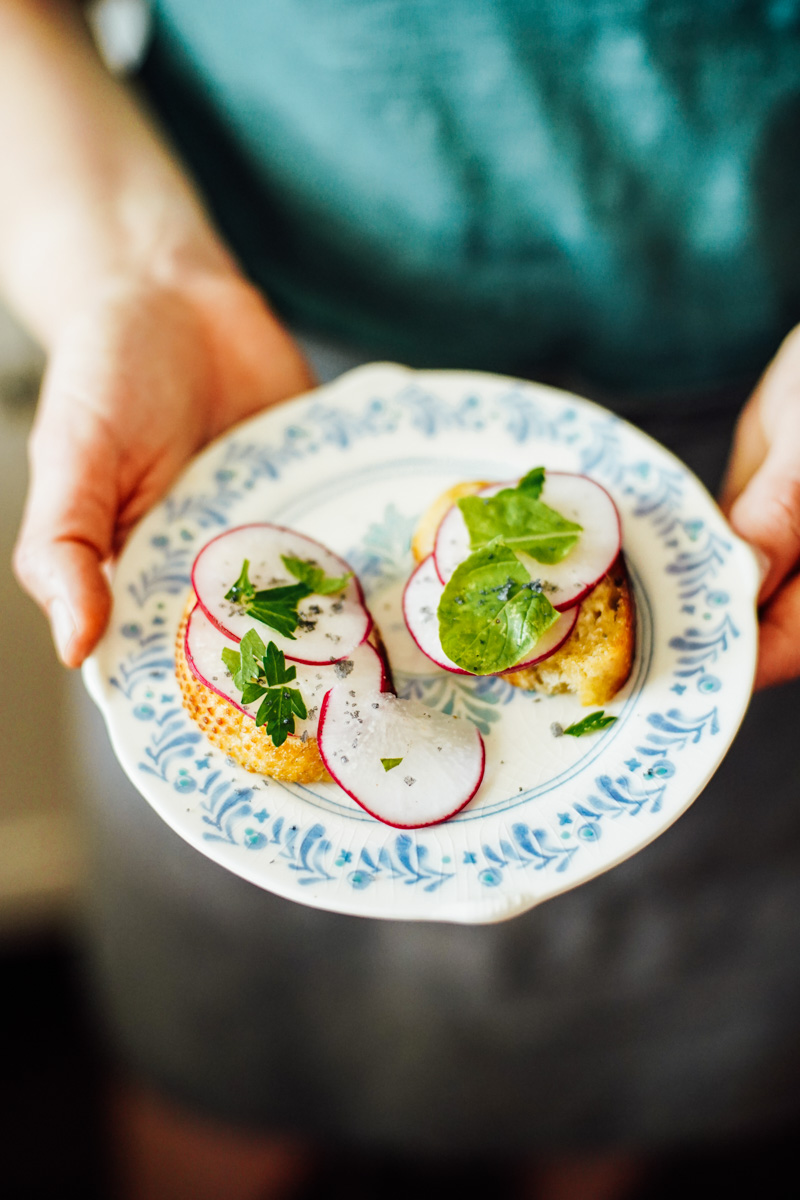
Recipes & Ideas
Eat both the flesh and skin of a radish. There’s no need to peel a radish. Just slice or chop and enjoy.
Slaw: Add radishes to a slaw with cabbage, carrots, and cilantro. Or, make a slaw with just salt, thinly sliced radishes, lime juice, and cilantro. Toss the ingredients together and enjoy. The acid (lime juice) in a slaw will tame the peppery flavor associated with radishes. Top on tacos, nachos, or fajitas.
Salad: I always add thinly sliced or finely chopped radishes to a green salad. Choose any leafy green, add chopped radishes and other veggies, and homemade vinaigrette. The crunch of the radish adds great texture and a peppery flavor.
Garnish: Thinly slice radishes and add them as garnish on top of your favorite meal: black bean and chicken nachos, quesadillas, ground beef tacos, chicken fajitas, sandwiches, scrambled eggs, a cheese omelette, eggs in a basket, etc. Not only are radishes a beautiful garnish, but also add a bright, peppery flavor.
Radish Toast: The French know that simplicity is gourmet. Radish toast is the perfect example: cut a slice of baguette or your favorite sourdough bread, spread with salted butter, add a layer of thinly sliced radishes and top with salt. Add a chopped fresh herb, if desired, like parsley, basil, or dill. AMAZING!
Roasted: Roasting radishes takes away some of the intense, peppery flavor. Cut radishes in half, sprinkle with salt and drizzle with olive oil. Roast on a sheet pan at 450F for 15 minutes. Serve alongside a roasted whole chicken, crispy chicken thighs, seared fish, grilled steak, or your favorite protein.
Dip: Serve sliced radishes with a dip, like classic hummus, pink beet hummus, guacamole, homemade ranch, or eggplant dip. Make a fun grazing board with radishes as a veggie option with a dip of choice.
Can I freeze radishes?
Yes, you can freeze radishes. I personally don’t freeze radishes as they lack a crunchy texture after freezing. But if you want to freeze radishes, you can do so.
First, slice or halve radishes. Blanch the radishes in boiling water for 2-3 minutes. Once the cooking process is complete, transfer the radishes to an ice bath (cold water and ice).
Freeze on a sheet pan until frozen, then transfer to a freezer bag. Store for up to 6 months. Best used in cooked recipes, like roasted radishes.
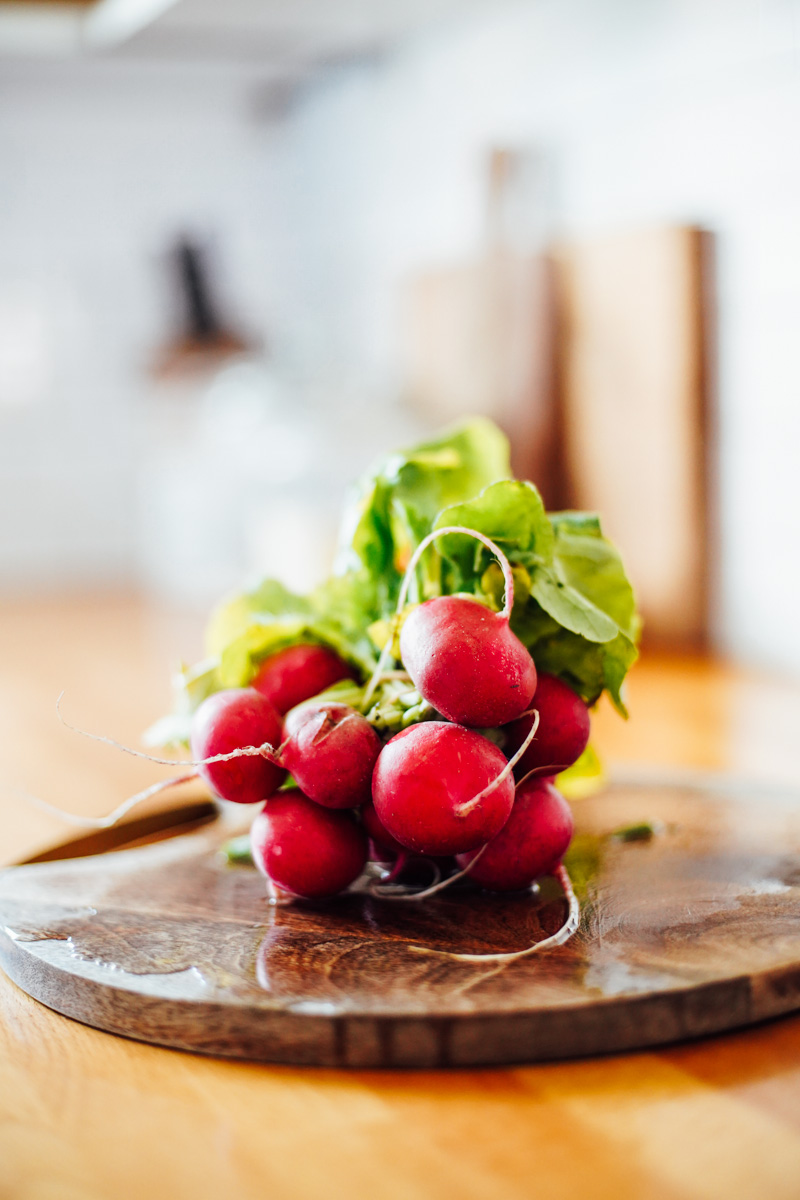
What can you do with radish tops?
Radish leaves are edible, with a bit of peppery flavor. Cut the leaves off radish bulbs and save them. Store the leafy greens just as you would lettuce, washing and drying just before using.
Use the leafy greens to make a delicious radish pesto to toss with pasta. Or, saute the greens with garlic, olive oil, and salt in a skillet. Add a squeeze of lemon juice after cooking (2-3 minutes to cook them down) to cut through the peppery flavor.

Two Best Ways to Store Radishes in the Fridge
Ingredients
Method 1: In a Bowl of Water
- 1 bowl medium or large
- water enough to submerge the radishes
Method 2: In a Bag
- 1 gallon-size plastic bag or reusable silicone bag
- 2 sheets paper towel or flour sack for a reusable option
Instructions
Method 1: In a Bowl of Water
- If the radish tops are still attached to the bulbs, remove the leafy greens by tearing them away with your hands. Or, cut the radish greens from the bulb.
- Add the radishes to a medium or large bowl (large enough to fit all the radishes without overflowing).
- Cover the radishes with fresh, cold water. All the radish bulbs should be submerged in the water.
- Place the bowl in the fridge, uncovered, for up to 2 weeks. Change the water every few days.
Method 2: In a Bag
- Separate the radish bulbs from the tops by tearing the greens from the bulb or cutting off the top of the radishes. You can leave a small portion of the stems, but not the whole leaves.
- Place the unwashed radish bulbs in a gallon-size plastic bag (or reusable silicone bag).
- Line the bag with a couple of damp paper towels or a kitchen towel (like a flour sack). Seal the bag, removing as much air as possible.
- Store the bag in the crisper drawer of your fridge for 10-14 days.
Video
Notes
- Store in a root cellar or basement for up to 3 months.
- Store in water on the kitchen counter for up to 2 days.
- Pickling: Store in the fridge for up to 2 weeks.
- Fermenting: Store in the fridge for up to 6 months.
The post How to Store Radishes (Best Ways to Keep Them Fresh & Crisp) appeared first on Live Simply.

